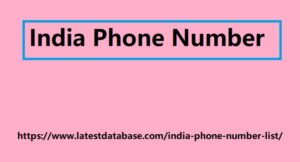|
|
Or directories in your robots.txt file, many search engine bots will follow your instructions. Although this is not the case for many sites that are below their crawl budget limit , the crawl budget allocated by Google's algorithm is also consumed by parts of the site. This can cause delays or problems when crawling certain URLs. As you begin your technical SEO audit, identify which pages are not indexed and investigate why. Of course, this may be intentional, but it may also be due to an error. In the case of errors, fix them and you'll see immediate improvement. Crawl budgets are not publicly available and are difficult to quantify. The basic principle is that by optimizing crawl costs and prioritizing important pages (for search engines to understand), you can expect to increase traffic from search engines. Technical SEO involves improving how pages are discovered and prioritized. As a result, you will see an improvement in your crawl rate. Distribution of crawls by page group. "Other" in gray is an unimportant category. Too much crawl budget is spent on unimportant pages. Source:OnCrawl ② Indexability The next highest priority after crawlability is indexability. Indexable URLs are URLs that are included in a search engine's catalog (list) of web pages and may be displayed on search result pages. Even if a URL is crawled, it may not be indexed due to various factors.
The most obvious examples are the description of meta robots and the instructions of robot texts. Index status for each group of pages. Source:OnCrawl Indexing can also be hindered if there are other, more authoritative versions of similar content. Specifically, the following conditions apply as factors that inhibit India Phone Number indexing. Duplicate content Canonical declaration If there is an alternative version, such as a printable page or a mobile version of the page (if applicable to Mobile First Index, the mobile version of the page will be indexed instead of the desktop version). redirect The scope of technical SEO is to check whether the elements related to indexing are properly set up and set on the appropriate pages in order to check whether the appropriate pages are properly indexed. ③Accessibility and website performance An accessible URL is one that is easy to display and draw. URLs that can be crawled and indexed may not be accessible when search engine bots attempt to crawl them.

It is ranked, However, if accessibility issues still persist, your site may receive a negative rating in search results. Accessibility for bots and users covers a wide range of topics, including: server performance HTTP status Load time, page size JavaScript rendering Page depth within the site structure orphaned page Dealing with spam and hacking The goal here is to discover the "threshold" at which accessibility and performance metrics negatively impact SEO. And make sure every page meets at least a minimum standard. Various tools will be used to achieve this goal. Server downtime, HTTP status provided to bots and users, size of resources (CSS, JS, images, etc.) when the page is requested, load time metrics such as TTFB, FCP, TTLB, etc. A tool that can obtain such numbers will be needed. *Average response time and resource amount for desktop and mobile versions. Source:OnCrawl You may end up linking to orphaned pages or pages that are too deep.
|
|